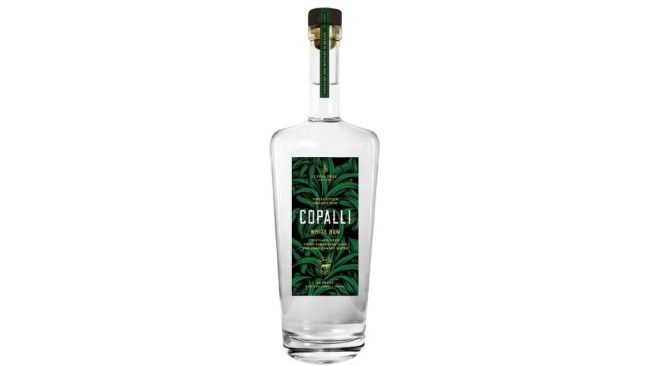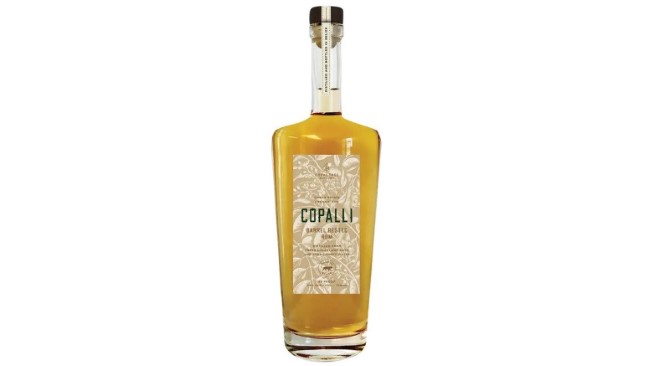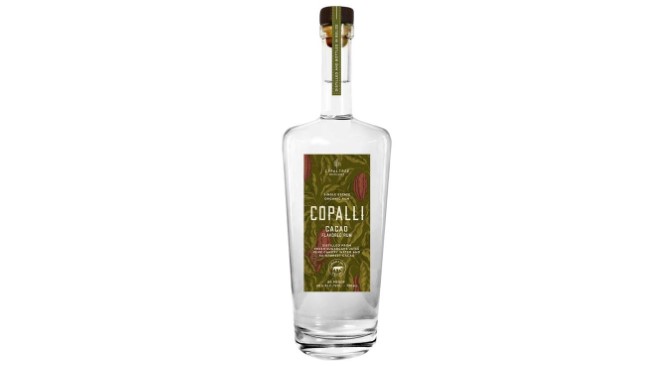Tasting: 3 Belizean Rums from Copalli Rum
Photos via Copalli Rum
All rum is ultimately a product of the sugar cane plant, but rum geeks know that there’s a dramatic difference between spirits produced at various stages of the plant’s harvesting. Most rum is fermented and then distilled from molasses, a byproduct created during the refining of sugar cane juice into crystalized table sugar. A smaller percentage of rums are instead fermented from the fresh sugar cane juice itself, which confers what is essentially the purest flavor of sugar cane terroir. What drinkers label this type of “cane juice rum” depends on where those rums hail from—in Haiti, the native spirit clairin is produced this way, while in the likes of Martinique or Guadeloupe, it’s rhum agricole.
And yet, these aren’t the only regions producing rum from fresh cane juice. Although a spirit such as Martinique AOC Rhum Agricole is arguably the standard bearer for the style, it seems like recently I’ve been tasting other examples of what one might describe as “agricole-style” rums from other sources abroad. There are some being made in Africa, as evidenced by Holmes Cay’s wonderful South Africa Mhoba rum, or Equiano Light Rum. And then there’s Copalli, a product of Belize that stands out as quite a bit different from the country’s more mainstream rum industry, which are largely molasses rums.
Copalli Rum is a younger, thoroughly modern distillery operating an impressive farm and facility in the heart of the southern Belize rain forest. Their product is marketed with a big focus on natural production methods, being organic and non-GMO, and proofed with “canopy water” collected straight from the rain forest. Likewise, the company highlights its green efforts and energy efficiency, using leftover sugar cane matter, post-crushing, to power their boiler, while the resulting ash is used as fertilizer. All the rum they produce is likewise made from fresh sugar cane juice, which is pressed only hours after being hand cut, before distillation in copper pot stills and column stills. Various Copalli bottlings are expressions of one or both of these stills.
I was certainly curious how the fresh cane juice rums of Belize might compare with the agricoles with which I am more familiar, so I set out to taste all three Copalli bottlings that are on the market today.
Copalli White RumABV: 42% (84 proof)

As mentioned above, this is a fresh sugar cane juice-based rum, and it’s a blend of pot and column distillate that was rested in stainless steel tanks. It comes in at a slightly higher than minimum proof point (proofed down with canopy water), and seems to have an MSRP around $30, though I’ve seen it as low as $25 in several places. That price point potentially makes this a very high-value expression of an agricole-style rum, considering that they’re often more expensive than molasses based rums.
On the nose, I’m getting clean citrus and some muskier, funkier fermented pineapple, along with more reserved notes of grass or resin. It’s a bright nose, suggesting a certain acidity, but without a lot of the deeper funky/earthy/wild notes one might expect from clairin or many Martinique agricoles. This seems somewhat easier going, with almost a slight graininess to the nose, a little something like toasted strands of wheat.
On the palate, Copalli White Rum is mildly sweet, with grass, resin and green pineapple, transitioning into a slightly spicy green character. There’s a little ripe tropical fruit as well, but overall the palate is fairly mild and befitting of the relatively lower ABV, nor am I getting a ton of obvious fruity esters from the pot still portion. What stands out here is how clean this is, with lovely citrus and cane juice fruitiness, though it does have traces of that husky grain note from the nose as well, somewhere far in the distance.
All in all? Seems like this would make a perfectly nice daiquiri, splitting the difference between more familiar rhum agricole and molasses rum flavors. And if you can find it for $25-30, that’s a pretty damn good value as well.
Copalli Barrel Rested RumABV: 44% (88 proof)

This “barrel rested” expression is likewise still produced from fresh sugar cane juice, but at a slightly higher proof point than the White Rum. The bigger difference, though, is the fact that this expression is all pot still distillate rather than a pot/column blend, which should result in a more robust rum. The use of “rested,” meanwhile, hints at the fact that this rum doesn’t spend long in the ex-bourbon barrels at all, apparently less than a year. In that range, one has to wonder if color is the bigger contribution than flavor. This one has an MSRP around $35-40.
On the nose, I’m getting bigger impressions of coconut this time around, both the husk and the flesh, along with toasted nuts and cacao nibs. The grass/resin character is still there, as is the citrus and pineapple, though they’re now harder to individually locate.
On the palate, this is quite toasty, with more of that grain-like quality that was found in traces on the White Rum—I take it that it hails from the distillery’s pot still, because it’s more prominent here. There’s a persistent cocoa that reminds me almost of Nestle Quik powder, before a transition back into the more familiar profile of grass and ripe tropical fruit—the two work decently well together, but lack a certain cohesion. On the back end, the profile unexpected moves into a more dry, dusty oak direction, contributing more mouth drying sensation than one would expect for the relatively short aging time. All in all, this brand just strikes me as somewhat immature, and I find myself wondering how a few more years might transform it. In this moment, it doesn’t feel like they’re getting the best aspects of these barrels yet.
Copalli Cacao RumABV: 40% (80 proof)

A chocolate-flavored rum is always the sort of thing I’m leery of, as I have little fondness for flavored spirits of any kind, but this is pretty much the most natural way possible to make something like “chocolate rum.” This is simply the company’s white rum, placed into a tank to steep with “100% organic, freshly harvested cacao nibs,” and then redistilled. That’s a very no-frills highlighting of the ingredients, and it thankfully steers clear from artificial flavors or additional sweetening. So kudos to Copalli for their transparency when it comes to products like this.
On the nose, this one is quite roasty, with an additional twist of overripe banana that is coming through more strongly than on either of the other rums. I’m reminded of a frozen, chocolate dipped banana one might buy at a zoo or sporting event. On the palate, the cacao flavor is pretty intense, melding with a more neutral booziness—the cacao is the big star and has wiped away most of the varietal character of the white rum. With that said, this ultimately reads like more of a dry cacao nib liqueur than a chocolate dram, with a silky texture that particularly stands out. I still find it slightly offputting, but that’s mostly a matter of personal preference—I think in terms of delivering upon the natural, nutty cacao nib flavor this one is probably giving people exactly what they’ll want. It’s very much of a dark chocolate mindset, with solid roastiness and nutty flavors. This might actually be useful as a liqueur—I could see adding it to other whiskey cocktails in particular, in small quantities, to infuse that chocolate character in the same way one might use chocolate bitters.
Jim Vorel is a Paste staff writer and resident beer and liquor geek. You can follow him on Twitter for more drink writing.







































